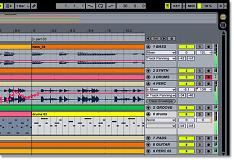Edirol PCR-M1 keyboard controller

The PCR-M1 MIDI keyboard controller from Edirol looks like a nice complement to the laptop studio musician. The thing I really like is its compactness. I prefer 25-key keyboards for this reason, and this one is very thin and light too. The assignable rotary encoder would be useful too — especially if you don’t already have another MIDI control surface.
The website has all the details, as follows: The PCR-M1 is the most compact, powerful USB MIDI Keyboard Controller available. This incredibly slim device is based on the highly-popular PCR-1, but lacks the audio I/O of the PCR-1 and adds a number of new MIDI features to make it more analogous to the larger PCR-series MIDI controllers. Like the PCR-30, 50 & 80, the PCR-M1 includes a 1×1 MIDI interface, sustain pedal connection, and expression pedal connection. Unlike any other PCR-series controller, the PCR-M1 offers a rotary encoder that can be assigned to a number controls including scrolling control maps, adjusting velocity, changing MIDI channels, & more. The PCR-M1 also includes three different options for drawing power: 1) USB-Powered, 2) AC Adapter (optional), and 3) Powered by 4 AAA batteries.
Also like its larger brothers, the PCR-M1 offers V-Link support for control of video devices directly from your keyboard. The PCR-M1 is incredibly versatile in terms of control. It offers 27 different parameter controls available from 16 different physical controls and functions with the powerful PCR-Editor available for PC & Mac.
The PCR-M1 uses Edirol & Roland’s S.L.I.M. technology to offer a very nice playable action with a very short throw & very little side-to-side play in the keys. It may be small, but this feature-packed device is no toy!
The PCR-M1 measures a mere 1-3/16″ (3cm) thick & weighs just 2 lbs 11 oz (1.22kg). It comes with a protective neoprene sleeve to protect it in travel.



